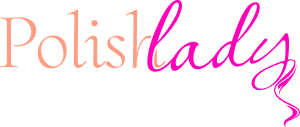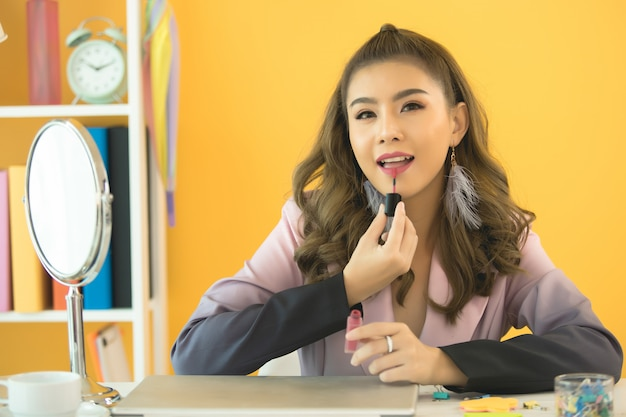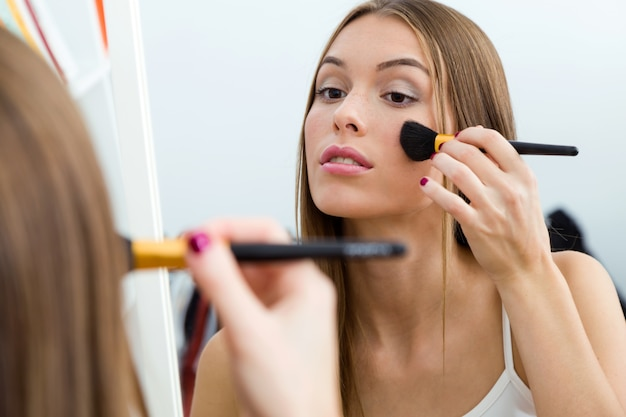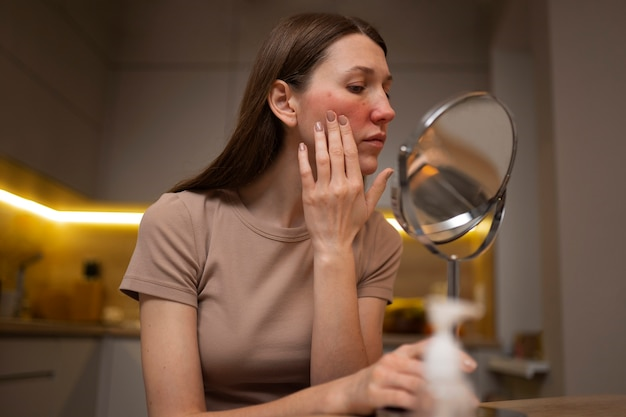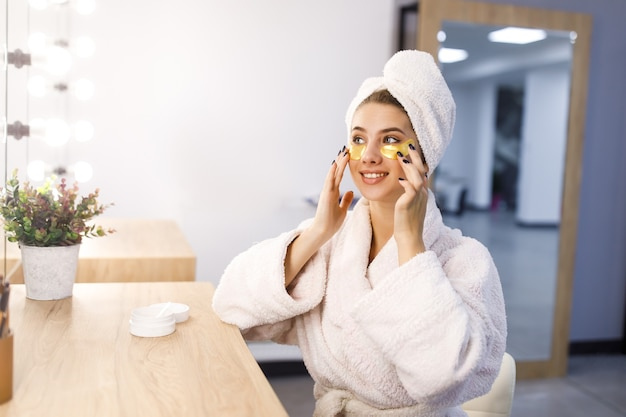The Ultimate Guide to Safe Hair Straightening: Protecting Your Tresses
Welcome to “The Ultimate Guide to Safe Hair Straightening: Protecting Your Tresses.” Many of us love the sleek, polished look that straight hair can provide, but the process of achieving it can sometimes come at a cost to our hair’s health. In this comprehensive guide, we will explore the best practices and techniques for safely straightening your hair while prioritizing its well-being. By following these tips and recommendations, you can achieve beautifully straight hair without compromising its integrity. Let’s delve into the world of safe hair straightening and discover how to protect and nourish your tresses throughout the process.
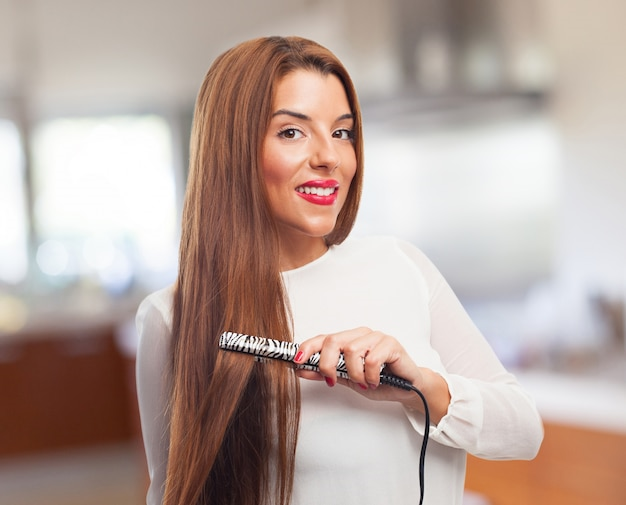
Understanding the Importance of Safe Hair Straightening
Before diving into the techniques, let’s emphasize the significance of safe hair straightening. While the allure of perfectly straight hair is undeniable, exposing your hair to excessive heat or chemical treatments without proper care can lead to damage and breakage. Embracing safe hair straightening practices will help you achieve the desired look while safeguarding your tresses.
Best Practices for Safe Hair Straightening
To achieve safe and stunning results, it is crucial to follow these best practices:
-
- Invest in a high-quality hair straightener with adjustable heat settings and ceramic or tourmaline plates. These materials distribute heat evenly, reducing the risk of hot spots and minimizing hair damage.
-
- Before straightening, wash your hair with a nourishing shampoo and conditioner to enhance its strength and moisture levels. Apply a heat protectant spray or serum to shield your strands from excessive heat.
-
- Ensure your hair is completely dry before using any heat styling tools. Wet or damp hair is more prone to damage, as the excessive heat can cause steam and weaken the hair shaft.
Preventing Damage During Hair Straightening
Follow these tips to protect your tresses from potential damage during the hair straightening process:
-
- Adjust the heat setting on your straightener according to your hair type and texture. Fine or damaged hair requires lower temperatures, while coarse or thick hair may need higher heat settings. Always start with the lowest temperature and increase gradually if necessary.
-
- Divide your hair into smaller sections to ensure even heat distribution. This allows you to pass the straightener through each section with precision, reducing the need for repetitive passes that can lead to heat damage.
-
- Excessive heat styling can weaken your hair over time. Minimize the frequency of straightening sessions to give your hair a chance to recover and maintain its natural resilience.
Safe Heat Styling for Straight Hair
If you prefer to keep your hair straight on a regular basis, consider these safe heat styling methods:
-
- Apply a thermal protectant product before straightening your hair to create a barrier between your locks and the heat. These products can help reduce moisture loss and protect your hair from thermal damage.
-
- Moisturize and nourish your hair by incorporating deep conditioning treatments into your hair care routine. This helps restore moisture, repair damage, and maintain the overall health of your straightened locks.
Hair Straightening Without Harm
For those seeking alternatives to traditional heat-based straightening methods, try these hair-friendly options:
Blowout Technique
Consider a professional blowout or try it at home using a round brush and a blow dryer with a concentrator nozzle. This method uses controlled heat and tension to straighten the hair without direct contact from a flat iron.
Overnight Braiding
Experiment with overnight braiding techniques like the classic French braid or twist braids. These styles provide a natural, heat-free way to achieve temporary straightened results.
Protecting Hair Health During Straightening
Straightening your hair can be a transformative experience, but it’s crucial to adopt measures to prevent damage and maintain your hair’s natural vitality. Here are a few key tips to safeguard your tresses:
-
- Prioritize a good hair care routine consisting of regular deep conditioning treatments, gentle cleansing, and avoiding excessive heat or chemical treatments. Healthy hair is more resilient and less prone to damage.
-
- Use heat styling tools sparingly and avoid frequent straightening. Prolonged exposure to high temperatures can weaken the hair shaft and lead to breakage. Embrace your natural texture on non-straightening days.
-
- Opt for lower heat settings on your straightener whenever possible. Higher temperatures are not always necessary and can cause unnecessary damage. Experiment with different settings to find the lowest temperature that achieves the desired results.
Hair Straightening Techniques
Choosing the right technique for hair straightening can significantly impact the health of your hair. Consider the following methods:
-
- Start by drying your hair using a round brush and a blow dryer. This technique helps to minimize direct heat exposure from straighteners and reduces the risk of damage.
-
- Invest in a high-quality straightener that utilizes ceramic or tourmaline plates. These materials distribute heat evenly, reducing the risk of hot spots and minimizing damage.
Best Hair Straightener for Damaged Hair
If you have damaged hair, it’s essential to choose a hair straightener that provides extra care and minimizes further harm. Look for straighteners with the following features:
-
- Opt for a straightener with variable temperature controls. This allows you to select a lower heat setting that suits your damaged hair while still achieving effective straightening results.
-
- Ionic straighteners emit negative ions that neutralize positive charges, reducing frizz and static. This feature helps to maintain moisture balance and protect damaged hair.
Choosing the Right Heat Protectant
Using a heat protectant is vital to shield your hair from the damaging effects of high temperatures. Consider the following factors when selecting a heat protectant:
-
- Look for a heat protectant that offers a high heat protection level, specifically designed for the temperature range of your straightener. This ensures optimal defense against heat damage.
-
- Different hair types have varying needs. Choose a heat protectant formulated for your specific hair type, whether it’s fine, thick, curly, or chemically treated. This ensures the product provides the necessary protection and suits your hair’s unique characteristics.
Best Heat Protectants for Different Hair Types
Here are some excellent heat protectants tailored to various hair types:
Fine Hair: TRESemmé Thermal Creations Heat Tamer Spray
Thick Hair: L’Oréal Paris Advanced Hairstyle BLOW DRY IT Quick Dry Primer Spray
Curly Hair: SheaMoisture Jamaican Black Castor Oil Strengthen & Restore Thermal Protectant
Chemically Treated Hair: CHI 44 Iron Guard Thermal Protection Spray
How to Use a Heat Protectant Properly
Using a heat protectant is a critical step in safeguarding your hair from the damaging effects of heat styling. Follow these steps to ensure proper application:
-
- Apply the heat protectant to freshly washed and towel-dried hair. Excess moisture can dilute the product’s effectiveness.
-
- Hold the heat protectant spray about 6-8 inches away from your hair and mist it evenly throughout. Make sure to cover the entire length, focusing on the ends where the hair is most vulnerable.
-
- Use a wide-toothed comb to distribute the heat protectant evenly from roots to ends. This helps to ensure that every strand is coated and protected.
-
- Give the heat protectant a few minutes to absorb into your hair before proceeding with heat styling. This allows the product to create a protective barrier.
How to Care for Straight Hair After Styling
Once you’ve achieved your desired straight hair look, it’s crucial to care for it properly to maintain its health and appearance. Follow these tips:
-
- Refrain from running your fingers through your hair excessively, as this can introduce oils and cause frizz. Touching your hair less will help to preserve its straightened look.
-
- Sleeping on a silk or satin pillowcase reduces friction, preventing hair breakage and frizz. It also helps to maintain the straightness of your hair overnight.
-
- Humidity can cause straightened hair to revert back to its natural texture. Apply a light anti-frizz serum or spray with humidity protection before stepping out on humid days.
The Effects of Heat Styling on Hair
Understanding the impact of heat styling on your hair is crucial in implementing protective measures. Here’s what you need to know:
-
- High heat can cause the hair cuticle to lift, leading to frizz, breakage, and moisture loss. Using a heat protectant forms a barrier that minimizes these effects.
-
- Excessive heat styling can deplete the hair of essential proteins and moisture, leaving it dry, brittle, and prone to breakage. Proper care and regular deep conditioning treatments help replenish lost nutrients.
How to Repair Heat-Damaged Hair
If your hair has already experienced heat damage, don’t worry—there are steps you can take to repair and restore it:
-
- Schedule regular trims to remove split ends and prevent further damage from spreading up the hair shaft.
-
- Invest in deep conditioning treatments or masks specifically formulated for damaged hair. These products help nourish and hydrate your hair, promoting repair and restoration.
-
- Give your hair a break from heat styling as much as possible to allow it to recover. Embrace your natural texture or explore heat-free styling options.
Safe hair straightening is not only about achieving the desired look; it’s also about maintaining the health and vitality of your hair. By incorporating the best practices discussed in this guide, you can ensure that your hair remains protected during the straightening process. Remember to choose the right heat protectant for your hair type, use the appropriate temperature setting on your styling tools, and employ proper aftercare to keep your hair healthy and radiant. By prioritizing hair health and following these guidelines, you can enjoy the benefits of straight hair while keeping your tresses strong, shiny, and beautiful. Embrace safe hair straightening practices and let your hair shine with confidence.
